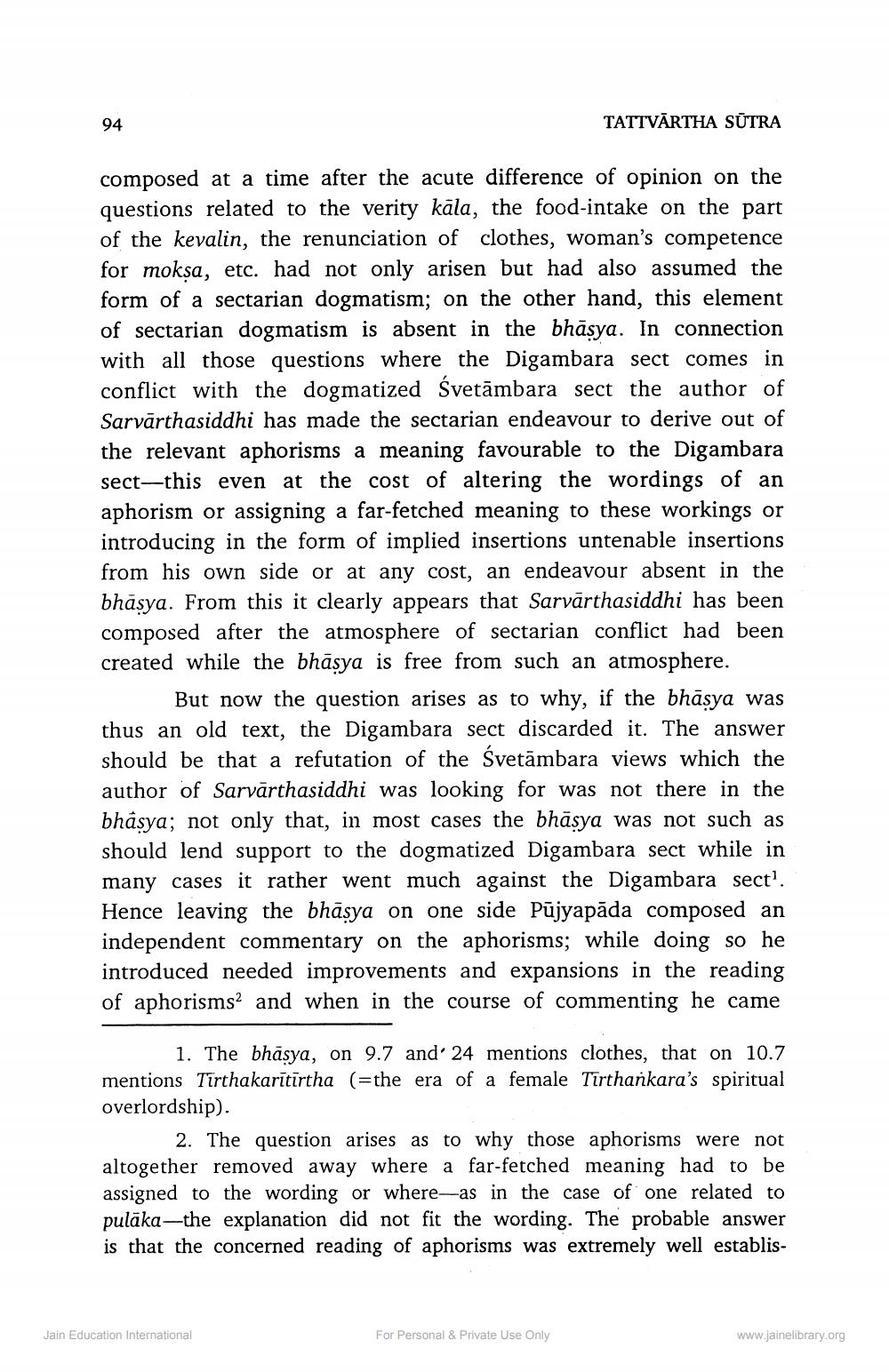________________
94
TATTVĀRTHA SŪTRA
composed at a time after the acute difference of opinion on the questions related to the verity kāla, the food-intake on the part of the kevalin, the renunciation of clothes, woman's competence for mokşa, etc. had not only arisen but had also assumed the form of a sectarian dogmatism; on the other hand, this element of sectarian dogmatism is absent in the bhāsya. In connection with all those questions where the Digambara sect comes in conflict with the dogmatized svetāmbara sect the author of Sarvārthasiddhi has made the sectarian endeavour to derive out of the relevant aphorisms a meaning favourable to the Digambara sect—this even at the cost of altering the wordings of an aphorism or assigning a far-fetched meaning to these workings or introducing in the form of implied insertions untenable insertions from his own side or at any cost, an endeavour absent in the bhāsya. From this it clearly appears that Sarvārthasiddhi has been composed after the atmosphere of sectarian conflict had been created while the bhāsya is free from such an atmosphere.
But now the question arises as to why, if the bhāsya was thus an old text, the Digambara sect discarded it. The answer should be that a refutation of the Svetāmbara views which the author of Sarvārthasiddhi was looking for was not there in the bhâsya; not only that, in most cases the bhāsya was not such as should lend support to the dogmatized Digambara sect while in many cases it rather went much against the Digambara sect!. Hence leaving the bhāsya on one side Pujyapāda composed an independent commentary on the aphorisms; while doing so he introduced needed improvements and expansions in the reading of aphorisms? and when in the course of commenting he came
1. The bhāsya, on 9.7 and 24 mentions clothes, that on 10.7 mentions Tirthakarītīrtha (=the era of a female Tirthankara's spiritual overlordship).
2. The question arises as to why those aphorisms were not altogether removed away where a far-fetched meaning had to be assigned to the wording or where—as in the case of one related to pulāka—the explanation did not fit the wording. The probable answer is that the concerned reading of aphorisms was extremely well establis
Jain Education International
For Personal & Private Use Only
www.jainelibrary.org




